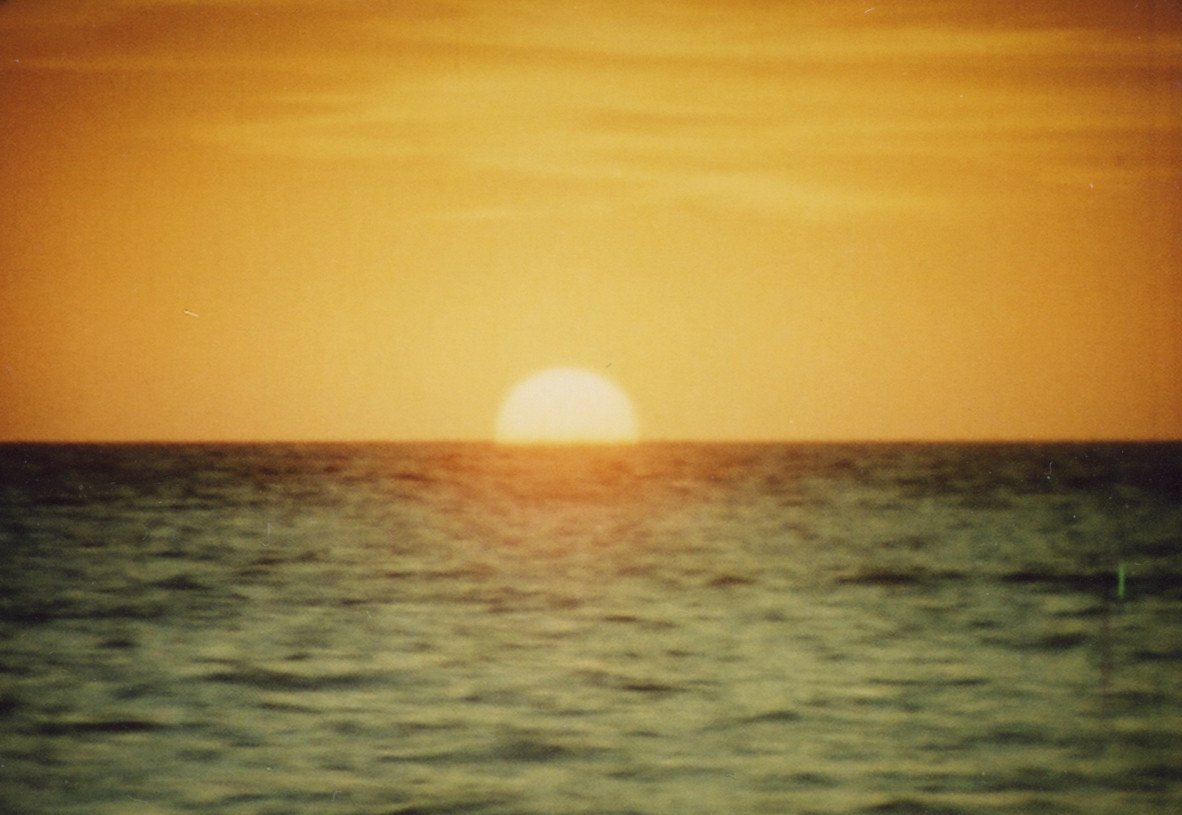James Turrell’s ‘After Effect’ at Pace
Tacita Dean’s 2001 film The Green Ray records the fabled “green flash” of the dying sun, a meteorological-optical phenomenon that occurs just as the sun slips below the horizon, emitting a ray of green light as darkness falls. The narrator tells us that the ray has long been a symbol of fortune for sailors — a “harbinger of great change.” Fascinated, she recounts her own failed attempts to witness the ray, until catching it one evening by chance off the shores of Mozambique. The whole episode is suffused with a prophetic air — an air of expectation — as if our own fate were secretly intertwined with the artist’s, our happiness dependent on hers. It’s unclear whether the green ray really exists on the film — whether Dean has actually captured its image — or if, like a mirage, it only exists in our vision, as a sight solely for us. By making the passage of time within the artwork identical with the time of its viewing, Dean analogizes the medium of film to a faculty of perception which for her is also a means of cosmic communion, an insight into the “interior of time” where the future appears as a blind spot — the setting of the sun on our world.
Tacita Dean, The Green Ray, 2001. 16mm film, 2min. MoMa.
After Effect — James Turrell’s latest “Wedgework” (recently presented by Pace) — takes up this question of the imaginary dimensions of time and space and their relationship to perception, memory, and thought. Light’s fugitive character lies at the heart of the piece, which is more concerned with the transition between different atmospheres than with any specific combination of colors. The work presents a seemingly static image — a corridor leading to another room around the corner — that gradually begins to transfigure, expanding and contracting as the physical properties of light — the different speeds at which colors reach the eye — become more apparent as the mechanism driving the action. The effect of this montage is to create a perceived dilation of time through an oversaturation of content — or, put otherwise, through an overproduction of aesthetic experience. As the light shifts between dawn and dusk, days, months, and years seem to cycle and pass; time opens up as a space in which everything has already happened, an empty infinity — the After Effect of a life not lived.
James Turrell, After Effect, 2021. Light installation, 79 min. Pace.
Like Michael Snow’s Wavelength, After Effect merges architecture and film, finding the essence of both in the movement of light through space, giving the air a certain weight and texture — a palpable feeling — that allows the viewer to invest it with meaning. And yet Snow and Turrell have an undeniable coldness about them, their work hemmed in by the very forms of mediation that allow for their evocative power. Both Snow’s edited zoom and Turrell’s pre-programmed light show betray a structuralism that leaves subjectivity largely unaddressed. Despite his fascination with Quaker meeting houses, Turrell’s work isn’t really about collective experience. Rather, it seems fixated on the presence of light as a natural phenomenon, something undeniably objective, that, while unaffected by the viewer, nevertheless relies on his vision to exist as such. Even the camera-eye of Snow’s Wavelength must finally come to rest on an image on the opposite wall of the room it traverses: a photo of the ocean, perhaps taken at sunset.
Michael Snow, Wavelength, 1967. 16mm film, 2min. MoMa.




